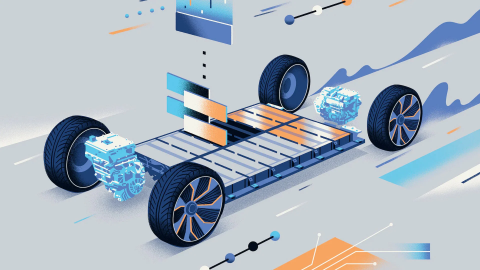NASA may use GM's Ultium EV technology to drive next lunar vehicle
The National Aeronautics & Space Administration (NASA) lunar vehicle development team may use General Motors’ (GM’s) cutting-edge Ultium EV technology for its Artemis campaign, which aims to send astronauts back to the Moon by 2026. The world-renowned space agency has selected three teams to develop a lunar terrain vehicle (LTV) that will aid astronauts in traversing the rugged landscape of the Moon. One of these teams, called Lunar Outpost, comprises industry leaders like GM, Lockheed Martin, MDA Space and Goodyear. This teamwork hints at the likelihood of integration of GM's cutting-edge Ultium EV technology into the upcoming lunar vehicle.
The involvement of GM's Ultium EV technology hints at a significant advancement in lunar exploration. Presently employed in vehicles like the Chevrolet Blazer EV and the GMC Hummer EV, the Ultium technology offers advanced capabilities that have the potential to revolutionize mobility on the Moon's surface.
The selected teams will embark on a year-long study to develop an LTV that meets the American space agency's stringent requirements, including remote control operation to guarantee safe navigation in challenging lunar conditions. Following this study phase, the space agency will request demonstrations from the teams, with the potential for further development and eventual deployment of the LTV on the Moon.
If Lunar Outpost's design is selected, GM's Ultium technology will power the next lunar vehicle, underscoring the automobile giant’s commitment to supporting American astronauts in their pursuit to explore new frontiers. Equipped with a reconfigurable cargo bed, a robotic arm, and the ability to withstand extreme lunar conditions, the LTV is expected to enable groundbreaking scientific discoveries and exploration.
A GM spokesperson told reporters, “With a rich legacy supporting our nation's space program, General Motors is thrilled to support American astronauts once again as they embark on this important mission to the moon.”
Under the Artemis campaign, the Artemis I mission started in November 2022, while the Artemis V mission is scheduled for no earlier than September 2026. It will likely include the deployment of the LTV. This vehicle will play a crucial role in facilitating astronauts’ exploration as well as scientific research on the Moon.
As NASA and its collaborators embark on this ambitious quest to send astronauts back to the Moon, the integration of GM's Ultium EV technology into the next lunar vehicle holds promise for advancing scientific research & exploration on our planet’s only natural satellite. With GM at the forefront of automotive innovation, the future of lunar exploration looks brighter than ever before.
